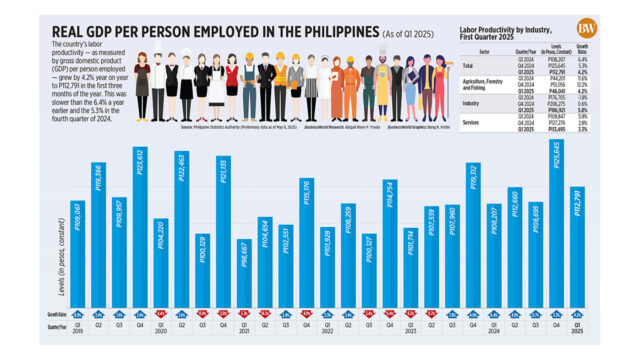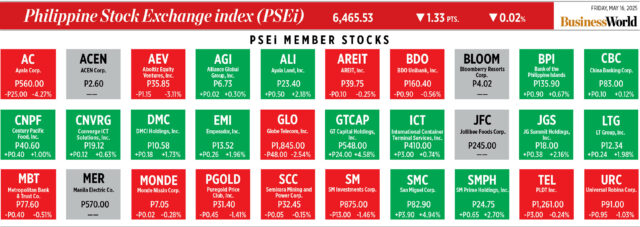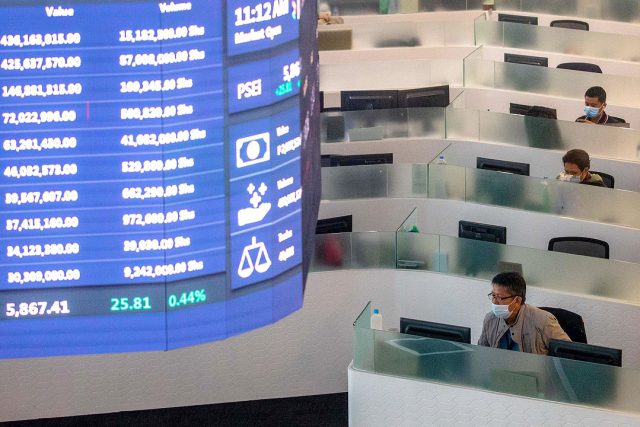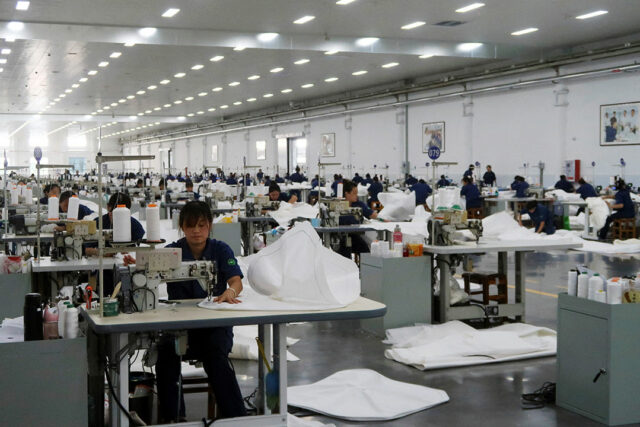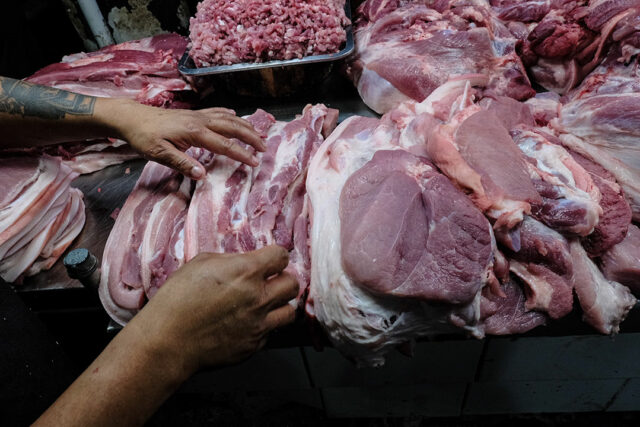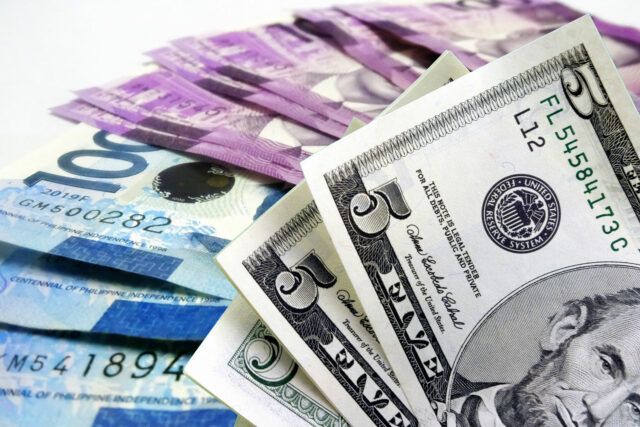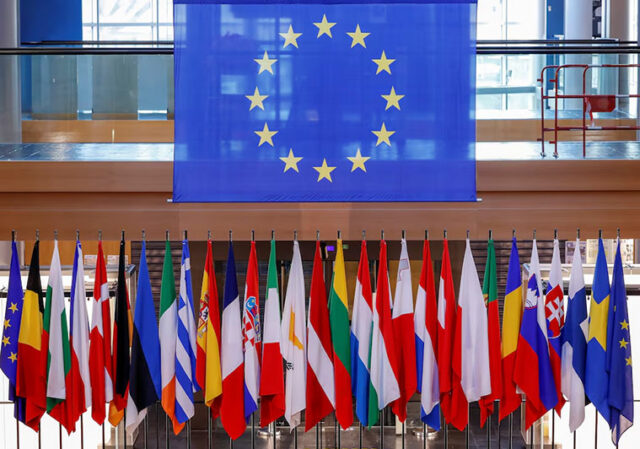Road discipline and safety
Road rage is no longer a rare outburst — it has become disturbingly common.
Violent confrontations among motorists, sometimes leading to fatalities, now frequently appear on social media and the news. In Metro Manila alone, a portion of the 72,000 vehicular accidents reported in 2022 was linked to road rage, according to the Metropolitan Manila Development Authority (MMDA).
The situation is worsening. Every day, an average of 32 Filipinos die in road accidents. The Philippine National Police (PNP) reported a notable increase in road accidents in 2024 compared to the previous year, with fatalities rising by 35% — from 2,030 in 2023 to 2,747 in 2024. A staggering 87% of these accidents were due to reckless driving. This includes improper overtaking, speeding, drunk driving, overloading, and the use of mobile phones while driving. Other factors include poor vehicle maintenance and inadequate road conditions.
But statistics tell only part of the story. Behind these numbers are countless impulsive decisions, unchecked emotions, and the failure to maintain discipline while driving. Traffic congestion, stress, fatigue, poor driving skills, and sometimes substance abuse or untreated mental health issues create a volatile mix. These elements can quickly escalate into aggressive driving — and ultimately, road rage.
Road rage lacks a consistent clinical definition, but it is generally understood as a set of thoughts, emotions, and behaviors in response to perceived provocation on the road. It is a reaction to what a driver views as poor, dangerous, or inconsiderate driving by others. These reactions can range from verbal abuse and rude gestures to more extreme forms, such as intentionally tailgating, sideswiping, or even using a vehicle or weapon to inflict harm.
Some experts define road rage as aggressive driving that endangers or potentially endangers others, typically involving deliberate acts of hostility and risk-taking. While road rage is not formally recognized as a mental disorder, it can be symptomatic of underlying issues such as anxiety, depression, or intermittent explosive disorder (IED) — a condition marked by repeated, uncontrollable outbursts of aggression. Those dealing with such mental health issues are encouraged to seek help from professionals for diagnosis and appropriate management.
Recognizing the urgency of the situation, the Land Transportation Office (LTO) launched its “Stop Road Crash” advocacy in 2024. The campaign aims to reduce road accidents by at least 35% by 2028. The LTO is undertaking a comprehensive data analysis of traffic accidents and road rage incidents, leveraging digital technologies to gather real-time information. The goal is to create effective, data-driven interventions encompassing enforcement, infrastructure improvements, regulatory reforms, and public education to promote road discipline.
Legislative efforts are also underway. Several bills seeking to impose harsh penalties on individuals involved in road rage incidents have been filed in the House of Representatives. One of these, House Bill 8991 or the Anti-Road Rage Act, proposes imprisonment of six to 12 years and fines between P250,000 and P500,000 for road rage incidents that result in death. These penalties are in addition to civil damages, as determined by the courts.
While policy and enforcement are crucial, individual responsibility remains paramount. The LTO provides practical advice for avoiding road rage and fostering safer road behavior. First, practice road courtesy. Simple acts like using turn signals, yielding when appropriate, and respecting pedestrian rights can significantly reduce tension and frustration. Giving way to merging vehicles or avoiding unnecessary honking can help create a calmer driving environment.
Second, manage your emotions behind the wheel. If another driver provokes you, resist the urge to retaliate. Take deep breaths, stay focused on your destination, and avoid escalating the situation. Keeping a safe distance from the vehicle in front of you is another essential step — not only to avoid collisions but also to prevent confrontations triggered by tailgating.
Third, avoid competition and aggressive driving behaviors. Racing, sudden lane changes, or retaliatory gestures may give a momentary sense of satisfaction but come at a high cost. Remember: you gain nothing by “winning” an argument on the road. What you stand to lose — your safety, your freedom, or your life — is far more significant.
Fourth, always consider the consequences. Road rage incidents can lead to serious legal repercussions: fines, imprisonment, or license suspension. They can also cause lasting harm, from physical injuries to emotional trauma. One impulsive act can ruin lives, including your own.
Finally, practice empathy. Every driver on the road has a story — you never know what challenges another person might be facing. Perhaps they’re rushing to an emergency or simply having a bad day. Choosing compassion over confrontation can make a world of difference.
The road is a shared space. Every motorist has the power — and the responsibility — to contribute to a safer environment. Road rage is not just a personal failing; it’s a public safety issue. By promoting discipline, respect, and emotional control behind the wheel, we can all help ensure that getting to our destination doesn’t come at the cost of someone else’s life.
Let us drive with patience, lead with courtesy, and remember that the strongest response to provocation is restraint. In doing so, we protect not just ourselves, but everyone around us.
Teodoro B. Padilla is the executive director of Pharmaceutical and Healthcare Association of the Philippines which represents the biopharmaceutical medicines and vaccines industry in the country. Its members are in the forefront of research and development efforts for COVID-19 and other diseases that affect Filipinos.
Peso may move sideways vs dollar
THE PESO could trade sideways against the dollar this week as the market continues to watch for developments in the United States’ trade talks with China and other trading partners.
The local unit closed at P55.635 per dollar on Friday, strengthening by 11.1 centavos from its P55.746 finish on Thursday, Bankers Association of the Philippines data showed.
However, week on week, the peso declined by 12.5 centavos from its P55.51-per-dollar close on May 9.
The peso climbed against the greenback on Friday following the softer-than-expected April US producer price index (PPI) data, Rizal Commercial Banking Corp. Chief Economist Michael L. Ricafort said in a Viber message.
The dollar was weaker early on Friday due to the PPI report, supporting the peso’s rise, a trader likewise said in a phone interview, although there was some profit taking later in the session.
For this week, the trader said the market will continue to monitor the US’ ongoing trade talks amid a lack of leads.
The trader sees the peso moving between P55.50 and P55.90 per dollar this week, while Mr. Ricafort expects it to range from P55.40 to P55.90.
The dollar fell in tandem with US Treasury yields on Friday after downside surprises on US economic data this week cemented bets of more US Federal Reserve rate cuts this year.
The week started out with a mix of market tailwinds headlined by a US-China trade truce which propelled the dollar higher, though the euphoria soon fizzled out and left currencies trading sideways.
Most of the action in the foreign exchange market came from the dollar’s moves against the South Korean won, where it fell sharply for a second straight day on news that Washington and Seoul discussed the dollar/won market earlier this month.
The moves were reminiscent of a similar episode in the Taiwan dollar earlier this month.
The dollar last traded 0.4% lower at 1,390 won.
In the broader market, the dollar was struggling to regain its footing after an overnight slide following data which showed US producer prices unexpectedly fell in April.
The PPI figures came on the heels of a tame consumer price reading earlier in the week, cementing bets that the Fed is likely to cut rates at least twice this year.
The euro was up 0.26% to $1.2130 while sterling rose 0.14% to $1.3325.
Against a basket of currencies, the dollar fell 0.2% to 100.57, though was on track for a slight weekly gain thanks to its sharp 1.3% rise on Monday.
Markets are now pricing in roughly 57 basis points (bps) worth of Fed cuts by December following Thursday’s data, up from 49 bps previously.
In a closely watched speech on Thursday, Fed Chair Jerome H. Powell said policymakers feel they need to reconsider the key elements around both jobs and inflation in their current approach to monetary policy. — Aaron Michael C. Sy with Reuters
Philippine shares may climb on bargain hunting
PHILIPPINE STOCKS may rise this week as investors hunt for bargains while awaiting more corporate results and global trade developments.
On Friday, the Philippine Stock Exchange index (PSEi) inched down by 0.02% or 1.33 points to end at 6,465.53, while the broader all shares index rose by 0.02% or 0.93 point to 3,769.37.
Week on week, the PSEi climbed by 0.11% or 7.33 points from its 6,458.20 finish on May 9.
“Local equities made a short trip above 6,500 [last] week post-midterm elections, but succumbed to profit taking late in the week. With the election now in the rearview, the market shifts its focus back to fundamentals,” online brokerage 2TradeAsia.com said in a market note.
“The local market is already on a six-week winning streak, with last week’s rise attributed mainly to the progress between the US and China’s trade relations. To add, the market has gone past and has so far managed to maintain its position above its 200-day exponential moving average. Noticeable, however, are the thinning gains of the market as selling pressure strengthens amid investor caution,” Philstocks Financial, Inc. Senior Research Analyst Japhet Louis O. Tantiangco said in a Viber message.
On Friday, US President Donald J. Trump announced that US officials will send letters to countries over the next two to three weeks regarding what they will be paying to conduct business in the US.
The announcement came as the US and China reached a 90-day truce on the trade war. The US will cut tariffs imposed on Chinese imports to 30% from 145% while China will slash duties on US imports to 10% from 125%.
Mr. Tantiangco said with the market still undervalued despite its recent rise, investors may look for bargains this week.
“However, investors are expected to look for catalysts that would compel them to get into the bourse. Investors are still expected to go through first quarter corporate results. Investors are also expected to watch out for developments on the global trade front, with signs of progress on negotiations with the US expected to fuel positive sentiment in the market,” he said.
Mr. Tantiangco placed the PSEi’s support at 6,400 and resistance at 6,600.
Rizal Commercial Banking Corp. Chief Economist Michael L. Ricafort said in an e-mail that the benchmark index’s immediate minor support is 6,290-6,405 and resistance is at 6,591.94.
For its part, 2TradeAsia.com pegged the PSEi’s immediate support at 6,300 and resistance at 6,650.
“First quarter earnings remain the primary guidepost for midyear positioning: expect margin trends and forward guidance to calibrate exposure, but also sector stories as consumption momentum from the campaign season tapers and public spending reopens post-elections,” it said. “High-quality names showing margin resilience plus strong capital discipline… are still underscored, amid the search for new catalysts in the short-term beyond earnings momentum and residual trade headlines.” — Revin Mikhael D. Ochave
US tariffs seen making PHL a target for dumped goods
THE GOVERNMENT needs to be ready to protect and support Philippine industries should the Trump tariffs trigger a wave of dumping by foreign exporters locked out of the US market, a business chamber said.
“We have to boost our manufacturing. If our employees are being laid off, our economy will suffer. We have to promote buying local products,” Federation of Filipino Chinese Chambers of Commerce and Industry, Inc. (FFCCCII) President Victor Lim told reporters on Friday.
“Because of the US tariffs, a lot of cheap products will be dumped here because (their producers) cannot sell (to the US),” he added.
He said that although dumped goods may lower prices, they could lead to job losses.
“Our inflation rate will go down. But the next problem will be our employment because many will be laid off due to companies shutting down,” he said.
“We have to protect our local industry. If there’s dumping, they have to charge a dumping duty; (otherwise,) those products will be dumped here,” he added.
He said the government should also improve ease of doing business and law and order.
“Actually, we want to promote business. And we have these tax and labor laws, which we have to improve to make doing business easier,” he said, noting that business and fire inspection permits remain difficult to obtain.
“Sometimes the fire department does not want to issue a permit because of the lack of a sprinkler system and fire alarm. With some old structures, you cannot put in a sprinkler system, and in some industries you don’t need the sprinkler system,” he added.
He said that the criminal cases tend to scare businesses away, including members of the FFCCCII.
He also cited the killing of abducted businessmen as a drag on investment.
“We immediately met with the Philippine National Police chief… and we put up a complaint in a newspaper about these kidnapping cases,” he added. — Justine Irish D. Tabile
Rice traders offering low prices for palay to be tracked by NFA
THE Department of Agriculture (DA) said it instructed the National Food Authority (NFA) to identify parts of the country where traders are purchasing palay (unmilled rice) from farmers at unusually low prices.
“This will allow the (NFA) to extend its procurement efforts during the next harvest season and prevent unscrupulous traders from exploiting farmers,” the DA said in a statement.
The NFA is seeking to boost its palay procurement for a government program to offer rice to vulnerable segments of society at a subsidized P20 per kilo.
Last week, 32 Kadiwa outlets, which sell produce at below-market rates because of government-supported direct farmer-to-market logistics, began roll offering P20 rice, following a pilot test in the Visayas that began on May 1.
The government intends to sustain the P20 rice program until the end of President Ferdinand R. Marcos, Jr.’s term in June 2028.
The DA said on Sunday the NFA is increasing its fleet of trucks and expanding storage and drying capacity to purchase more rice from farmers, especially in hard-to-reach areas.
It still has over P9.8 billion available for palay procurement this year — suggesting a spending capacity sufficient for 5 million 50-kilo bags of rice.
“The NFA has current inventory equivalent to 8 million bags of rice, with half of that stock bought during the first four months of the year,” the DA said.
It said Agriculture Secretary Francisco P. Tiu Laurel, Jr. recently met with NFA’s regional managers and key officials to ensure the rice sold the P20-per-kilo program “meets quality standards.”
“…this subsidized rice program presents an opportunity for the agency to shift the long-standing perception that NFA rice is of poor quality — an opinion still shared by some critics and politicians,” the DA said.
Under the Rice Tariffication Law, the NFA no longer imports rice for its reserves. It is now limited to purchasing palay from farmers only. — Kyle Aristophere T. Atienza
Pork retail prices defy price caps in early May
PORK PRICES rose at retail in early May, according to the Philippine Statistics Authority (PSA), as sellers proved unable to sell the commodity within government price guidelines.
The average retail price of fresh pork shoulder (kasim) rose in the May 1-5 monitoring period to P369.64 per kilo from P365.36 on April 15-17, which the PSA calls the second phase of the month, and P365.19 a month earlier, it said in a report.
Pork prices continued to rise in recent weeks even with a maximum suggested retail price (MSRP) in effect. The government lifted the MSRP on May 15 at the request of the pork industry, which claimed that participants in the pork value chain were setting prices too high to allow retailers to comply.
The MSRP had been set at P300 per kilo for a whole slaughtered pig, P350 for kasim and hind leg (pigue) and P380 for pork belly (liempo).
The PSA said the average retail price of regular-milled rice declined to P43.74 per kilo during the first phase of May from P44.44 in the April 15-17 monitoring period. A month earlier, prices averaged P44.92.
The DA has been offering a P29-per-kilo rice program, which it said helped influence market prices.
The DA is currently offering subsidized P20 rice to vulnerable segments of the population. The subsidy is shared with local government units, with the rice on offer in government-backed outlets known as Kadiwa stores.
The PSA said a kilo of galunggong averaged P215.70 at retail during the first phase of May, against P229.11 in the second phase of April and P219.64 a month earlier.
It said the average retail price of tomatoes rose to P75.01 per kilo in the first phase of May, from P66.77 in the second phase of April.
“Similarly, this was higher relative to its price level in the first phase of April at P65.67 per kilogram,” it said.
It said native garlic averaged P178.79 per kilo at retail during the first phase of May.
Native garlic had averaged P190.97 per kilo in the second phase of April and P179.07 in the first phase of April.
The PSA said the average retail price of calamansi rose to P100.72 per kilo in the first phase of May, from P97.43 per kilo in the second phase of April and P92.53 per kilo a month earlier.
Cooking oil posted an average retail price of P176.83 per liter in the first phase of May, from P175.08 in the second phase of April and P174.00 a month earlier. — Kyle Aristophere T. Atienza
GOCC subsidies rise nearly 55% in March
SUBSIDIES extended to government-owned and -controlled corporations (GOCCs) rose 54.69% in March, according to the Bureau of the Treasury (BTr).
The BTr reported that budgetary support to GOCCs increased to P10.63 billion in March from P6.87 billion a year earlier.
Month on month, GOCC subsidies rose 40.35% from P7.57 billion in February.
State-owned firms receive monthly subsidies from the National Government to support their daily operations if their revenue is insufficient.
In March, the National Irrigation Administration (NIA) received the most subsidies at P3.79 billion, accounting for 35.69% of the total.
This was the second time NIA received subsidies this year, after the P3.16 billion granted in February.
The Philippine Crop Insurance Corp. (PCIC) received P2.25 billion, followed by the National Housing Authority with P1.35 billion.
GOCCs that were provided at least P400 million in subsidies included the National Power Corp. (P649 million), the Philippine National Railways (P583 million), the Philippine Children’s Medical Center (P433 million) and the Intercontinental Broadcasting Corp. (P400 million).
Receiving at least P100 million were the Subic Bay Metropolitan Authority (P227 million), the Philippine Heart Center (P184 million), the National Kidney and Transplant Institute (P124 million), and the Cultural Center of the Philippines (P114 million).
Receiving P74 million was the Light Rail Transit Authority. Additionally, P70 million went to the Philippine Coconut Authority, P63 million to the Small Business Corp., P59 million to the Lung Center of the Philippines, P58 million to the National Dairy Authority, P38 million to the Philippine Rice Research Institute and P30 million to the Development Academy of the Philippines.
The rest of the recipients were the Philippine Institute for Development Studies (P24 million), the Center for International Trade Expositions and Missions (P20 million), the Sugar Regulatory Administration (P19 million), the People’s Television Network, Inc. (P18 million), the Metropolitan Waterworks and Sewerage System (P14 million), the Aurora Pacific Economic Zone and Freeport Authority (P10 million), the Southern Philippines Development Authority (P7 million), the Philippine Institute of Traditional and Alternative Health Care (P8 million), the Philippine Tax Academy (P5 million), the Philippine Center for Economic Development (P5 million) and the Zamboanga City Special Economic Zone Authority (P4 million).
The National Food Authority (NFA), the Bases Conversion Development Authority, and the Philippine Fisheries Development Authority received no subsidies for the month.
In the first three months of the year, GOCC subsidies rose 15.33% year on year to P22.59 billion.
The NIA was the top recipient in the quarter with P8.03 billion in subsidies, followed by the NFA and PCIC, both with P2.25 billion. — Aubrey Rose A. Inosante
Debt service bill falls nearly 35% in first 2 months
THE external debt service bill fell 34.9% in the first two months following a sharp decline in principal payments, the central bank said, citing preliminary data.
Debt service on external borrowing was $1.59 billion in the period, against $2.44 billion a year earlier.
Amortization payments fell 67.6% year on year to $383 million.
Interest payments dropped 4.2% to $1.21 billion.
Rizal Commercial Banking Corp. Chief Economist Michael L. Ricafort said the slump in debt servicing was due to the lower amount of matured external debt that needed to be repaid compared to a year earlier.
“This could have also been a function of lower amounts of foreign debt in the NG total borrowing mix in recent years (to minimize) foreign exchange risk involved in foreign borrowing,” he added.
Between this year and 2027, the National Government (NG) plans to source at least 80% of its borrowing from domestic sources. The government previously had a 75:25 borrowing mix.
The Treasury reported that NG gross borrowing fell 7.15% to P192.45 billion in March, with gross external debt declining 31.9% to P34.65 billion.
The debt service bill represents principal and interest payments after rescheduling, according to the Banko Sentral ng Pilipinas (BSP).
This includes principal and interest payments on fixed medium- and long-term credits including International Monetary Fund credits, loans covered by the Paris Club and commercial banks’ rescheduling, and New Money Facilities.
It also covers interest payments on fixed and revolving short-term liabilities of banks and nonbanks.
The debt service data exclude prepayments on future years’ maturities of foreign loans and principal payments on fixed and revolving short-term liabilities of banks and nonbanks.
Outstanding external debt rose 9.8% to $137.63 billion in 2024.
This brought the external debt-to-gross domestic product (GDP) ratio to 29.8% at the end of 2024 from 28.7% at end-2023.
At the end of 2024, the external debt service burden as a share of GDP was 3.7%, up from 3.4% at the end of 2023.
The BSP’s external debt data cover borrowings of Philippine residents from nonresident creditors, regardless of sector, maturity, creditor type, debt instruments or currency denomination. — Luisa Maria Jacinta C. Jocson
CITEM bats for budget parity with tourism promotion agency
THE Department of Trade and Industry’s Center for International Trade Expositions and Missions (CITEM) said it is seeking additional funding next year to expand its export promotion activities.
“We are now working on a bigger budget for export promotion, for industry development, and also for capacity building for our micro, small, and medium enterprises (MSMEs),” CITEM Executive Director Leah P. Ocampo told reporters last week.
She said the goal is to achieve funding parity with the Department of Tourism’s promotion arm.
“Right now, we have less than P300 million … (and we need) at least the equivalent of that of our tourism counterpart’s budget. I think they have (around) P1.5 billion. There has to be a review of the budget allocations,” she said.
“We have to be very serious in promoting our exports or to at least develop our industries for export. We have to have a bigger budget,” she added.
She said that CITEM has been advocating for greater priority for export promotion in light of looming trade disruptions.
“Export promotion is not being given enough attention. We actually understand that because the government has other priorities than exports,” she said.
“I think even President Ferdinand R. Marcos, Jr. realized that, and that’s also the reason why he actually came up with an executive order (EO) strengthening CITEM as an export promotions agency. I think that’s a big move,” she added.
EO 75 was signed on Nov. 22. It reorganized the CITEM Governing Board, which now comprises department secretaries, the Government Service Insurance System, and representatives from the Office of the President and the private sector.
“I have been really pushing for a bigger budget for CITEM. And I think with EO 75, we are getting the attention that we need, and the Department of Budget and Management is very sympathetic to us, so I am hopeful that we will get a bigger budget next year,” Ms. Ocampo said.
For this year, she said that CITEM will be participating in five events in China, Europe, and Italy. — Justine Irish D. Tabile
Frasco likens impact of proposed ASEAN visa to Schengen scheme
TOURISM Secretary Ma. Esperanza Christina G. Frasco said she hopes that a proposed ASEAN visa will encourage multiple-destination stops by visitors to the region, similar to travelers in Europe holding Schengen visas.
“The ASEAN tagline is ‘A destination for every dream.’ And the ASEAN visa certainly is part of that dream,” Ms. Frasco said in a statement sent over the weekend.
She hopes the scheme will “unify ASEAN as a destination in terms of the strength of its natural assets, its unparalleled warmth and hospitality,” she added.
She said that the proposal is similar to the Gulf Cooperation Council (GCC) visa for the Middle East and the Schengen visa for Europe.
“As a Minister of Tourism, it is a proposition that I have tried to make at every opportunity. I am glad to hear similar interest from our fellow ASEAN nations, and we are very hopeful that the subject matter will again come up as the Philippines hosts ASEAN in 2026,” she added.
She said that Southeast Asian countries can collaborate while maintaining “healthy competition.”
“Competition is always very healthy, but collaboration is healthier in a sense that ASEAN coming together… would really benefit all of our countries,” she said.
“We are grateful for our existing collaborations with countries such as Thailand with whom we have recently signed an implementation program for our Memorandum of Cooperation on tourism,” she added.
However, she noted a decline in Chinese visitor arrivals to the Philippines.
“The lesson that we learned from that is to really be able to diversify our dependency into other markets as well,” she said.
“And so now, we are targeting markets such as the Middle East and the GCC, as well as India. And of course, to further strengthen our source markets from South Korea, Japan, the United States, as well as Europe,” she added.
These efforts, she said, resulted in a 500-800% growth in tourism arrivals from the Middle East and the GCC.
The Philippines welcomed 2.1 million visitors in the first four months, down 0.82% from a year earlier.
South Korea accounted for a 22.25% market share, down 18% year on year.
The other top source markets in the first four months were the US, Japan, Australia, and Canada.
“Tourism from South Korea has been declining as the economy faces the challenges from the global tariff uncertainty, which combined with a weak South Korean won to mean (travelers preferred) Japan due to the weaker yen, making the destination attractive,” Mastercard Economics Institute said in an e-mail.
To address this, it said that the Philippines could host more sports or music events to attract more tourists.
“Having more major sporting or music events can be a good way to attract more tourists. Being featured in TV shows may also be a good way to attract tourists, as we saw with The Glory, which attracted strong growth of visitors from Japan to Korea,” it added.
Mastercard Chief Economist for Asia-Pacific David Mann said the Philippines could also look at how it can further improve the visiting experience for tourists.
“I think the key thing for sure comes down to how other people’s experiences were when they visited and how they were reporting back — that word of mouth, the sharing on social media … really makes a very big difference,” he said.
“The more positive stories that really gain a life of their own, the stronger the inflows, the stronger they can even become later,” he added.
He noted, however, that improving the ease of getting through the border and adding more direct flights will not happen overnight.
“A lot of the infrastructure, hard and soft, needs to be built out as well. But I think the confidence people have and the passion that they have to want to go for a particular draw … seem to be one of those extra things that can really make a very big difference,” he added. — Justine Irish D. Tabile

